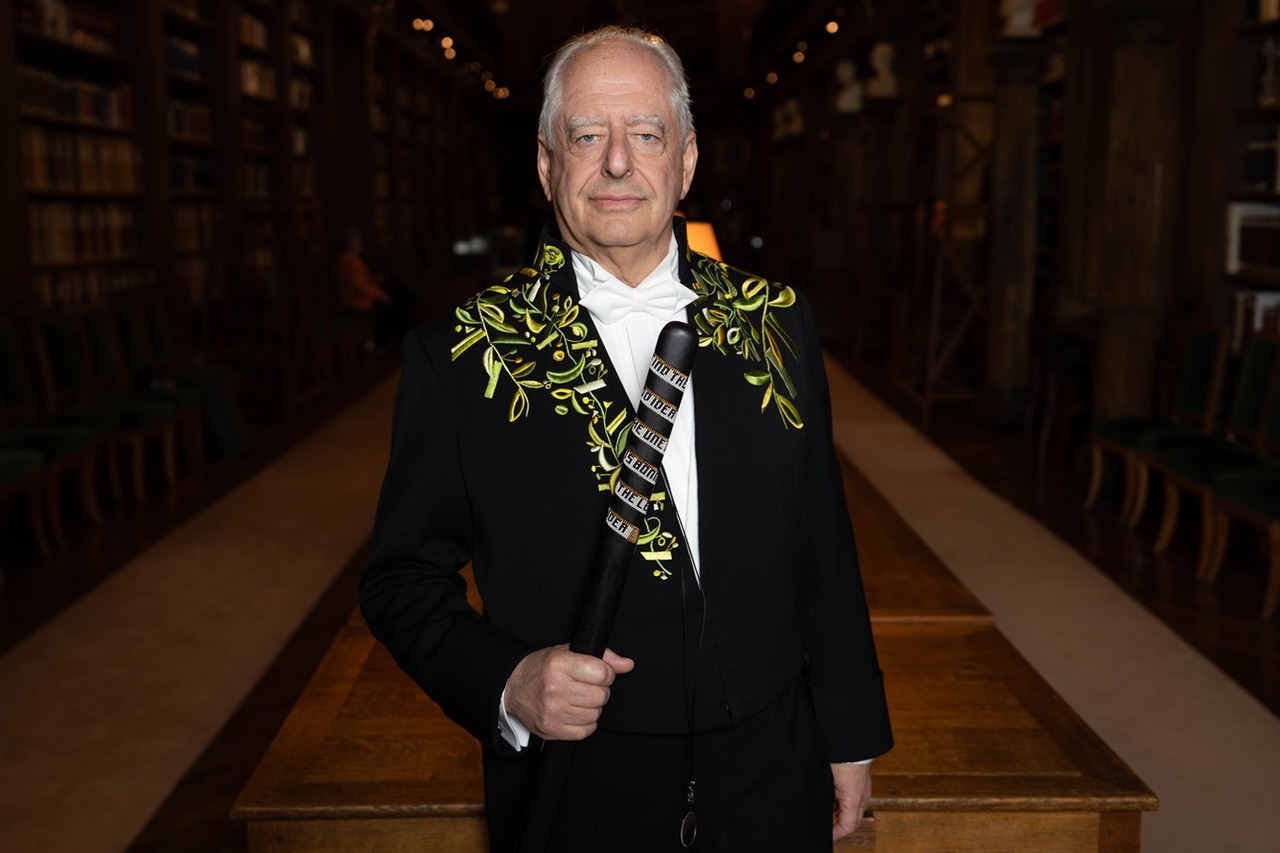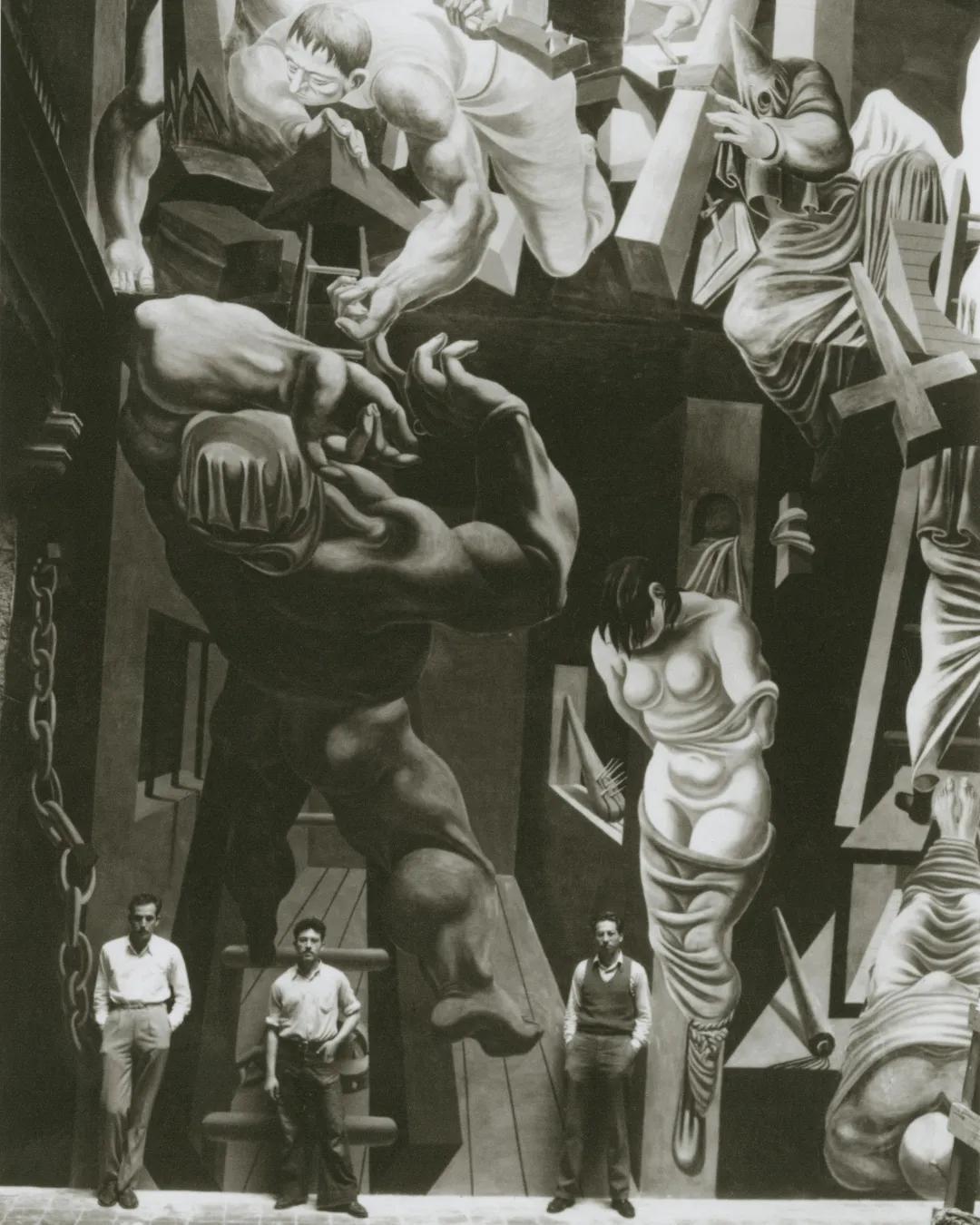Exhibition Guide: Alina Szapocznikow

Alina Szapocznikow in her Królewska Street studio, Warsaw, Poland, 1960. All images: © ADAGP, Paris. Courtesy the Estate of Alina Szapocznikow / Piotr Stanislawski / Galerie Loevenbruck, Paris / Hauser & Wirth
Exhibition Guide: Alina Szapocznikow
For our first solo exhibition devoted to Alina Szapocznikow since undertaking representation of the artist’s estate in May 2018, we focus on the last ten working years of Alina's life, from 1962 to 1972. The ‘To Exalt the Ephemeral’, comes from the 1972 manifesto that she wrote, summing up her goals and challenges as a sculptor.
The exhibition begins with ‘Noga’ (‘Leg’) her first body cast, ‘Untitled’, the first cast of her mouth. It then moves through the scope of her experiments with different materials: bronze, resin, cement, car parts, polyurethane, and photography. The exhibition displays her interest in Pop Art and Surrealism, as well as her formal investigations of sculpture. The show concludes with the ‘Herbier’ series—the last series she produced, and casts of her own face that function as death masks. The exhibition is organized by explorations of themes, and materials, rather than a direct chronology.
‘My gesture is addressed to the human body, ‘that complete erogenous zone,’ to its most vague and ephemeral sensations. I want to exalt the ephemeral in the folds of our body, in the traces of our passage.’
1962–1968: The Fragmented Body In 1962, Alina Szapocznikow created ‘Noga’ (Leg) by casting her own leg in plaster. It is the first instance in which the artist made an imprint of her own body, a process that she would repeat throughout the remainder of her career. Over the next decade, Szapoznikow would cast lips, faces, breasts, bellies, legs and, in the last year of her life, a full body.

Alina Szapocznikow, Noga (Leg), 1962. Photo: Thomas Barratt

Installation view, ‘To Exalt the Ephemeral: Alina Szapocznikow, 1962 – 1972’, Hauser & Wirth New York, 69th Street, 2019
Szapocznikow’s work poses a challenge to the tropes of traditional sculpture and classical figurative depictions of the human body as a whole and integrated entity. Her use of casting and repetition, evoking assembly line production, defies hierarchical notions of the sculptural object as a unique form. Szapocznikow’s presentation of the body as fragmented, detached from its origin and reassembled, gives her work an internal tension that teeters on violence.
Simultaneously, Szapoznikow creates her human-landscapes with a confident sexuality; the body is a space of excitement and sensual fantasies. Through the allusion of dismembered parts, Szapocznikow presents the body as fetish, simultaneously eroticized and abject. Szapocznikow’s open exploration of the body creates a charged atmosphere for the viewer, who is captured by the contradictory feelings of desire and fear. The works Szapocznikow produced between 1962 and 1972, the last decade of her life, belong to a distinctly modern era, reflecting influences from the major twentieth century artistic movements of Futurism, Surrealism, Pop Art, and Nouveau Réalism.

Installation view, ‘To Exalt the Ephemeral: Alina Szapocznikow, 1962 – 1972’, Hauser & Wirth New York, 69th Street, 2019

Alina Szapocznikow, Iluminowana (Illuminated Woman) [detail], 1966-1967. Photo: Fabrice Gousset
1966–1970: Alina Illuminated By the mid 1960s, Szapocznikow was actively experimenting with new materials such as polyester resin. This newly available commercial material is quick-drying and has a fragile, flesh-like surface unlike the effects of traditional sculptural materials. Szapocznikow explained: ‘Plastic materials seem perfect to me for attempts to express and capture our age because of their repetitive possibilities, their lightness, their colors, their transparency, their inexpensiveness.’
In 1966, the artist created numerous functional sculptures in polyester resin: glowing female lips extending from elongated stem-like bases, wired as lamps. The utilitarian role of these objects contradicts their natural shape and glowing corporeality. Trapped between household commodities and bodily forms, Szapocznikow’s lamps possess an inherent contradiction that seems designed to discomfit.
Illumination would become a signature element in Szapocznikow’s oeuvre. She made many versions of the ‘Lampe-Bouche (Illuminated Lips)’, incorporating the cast lips of different female friends, including actress Julie Christie. Two of the lamps on display, ‘Untitled’ and ‘Pour Louise’, were made as a gift for fellow artist Louise Bourgeois and mark the pair’s historic meeting in 1969. On the base of the taller of these lamps, Szapocznikow inscribed ‘Pour Louise, Alina’.
‘Illuminated Woman’ (1966-1967) contains casts from Alina’s own face and breasts. Combining plaster and polyester resin, this work exemplifies the unique means by which Szapocznikow integrated authentic, lifelike representations with distortions of the human form.

Alina Szapocznikow, Kaprys - Monstre (Caprice - Monster), 1967. Photo: Thomas Barratt
1967: Kaprys-Monster (Caprice-Monster) Szapocznikow’s earliest works fall into the realm of classical sculptural representations of the human form in static and naturalist poses. By the mid 1950s, her practice had undergone a radical transformation; the figure is still present, but Szapozcznikow has abandoned mimetic representation and moved on toward figurative abstraction. By 1967, she had begun using polymer-based plastics to facilitate a more expressive approach to representations of the body.
Szapocznikow wrote to Pierre Restany in 1972: ‘My work has its roots in sculpture. For years I threw myself into studying problems of balance, volume, space, shadow and light. All in order to arrive at what I am today: nothing other than a sculptor who has experienced the failure of a thwarted vocation.’ In the ‘Kaprys-Monster’, the body has morphed into an organic plant-like shape. This sculpture, made predominantly of polyurethane foam and colored polyester resin, is deceptively complex in its construction and its intention.
Simultaneously translucent and opaque, solid yet fluid, it emits an unsettling, visceral presence belied by its formal balance. Containing polymorphous body parts, this quasi-human sculpture still reads as a complete figural entity. Sexual organs germinate in unlikely configurations as Szapocznikow combines the phallic forms of her subject’s limbs with the glow of the sculpture’s central womb. Szapocznikow meant for her sculpture to surprise and scare, pulsing in brilliant orange red and floating in space on its simple metal stand.
The word ‘caprice’ implies a relationship to time—a suddenness—that may simultaneously relate to the quick-drying nature of resin and the near instantaneity with which perception can shift. While Szapocznikow is known for her pioneering explorations of the female body, she also pursued masculine figuration throughout her practice, particularly at the beginning and end of her career. In ‘Kaprys-Monster’, the viewer is confronted with an ambiguous sculptural presence—a blurring of distinctions, shifting uneasily between male and female, sensuality and abjection, wholeness and fragmentation.
Alina wrote of her practice in general: ’My work is difficult, as sensation that is felt in a very immediate and diffuse way is often resistant to identification. Often everything is all mixed up, the situation is ambiguous, and limits are erased.’
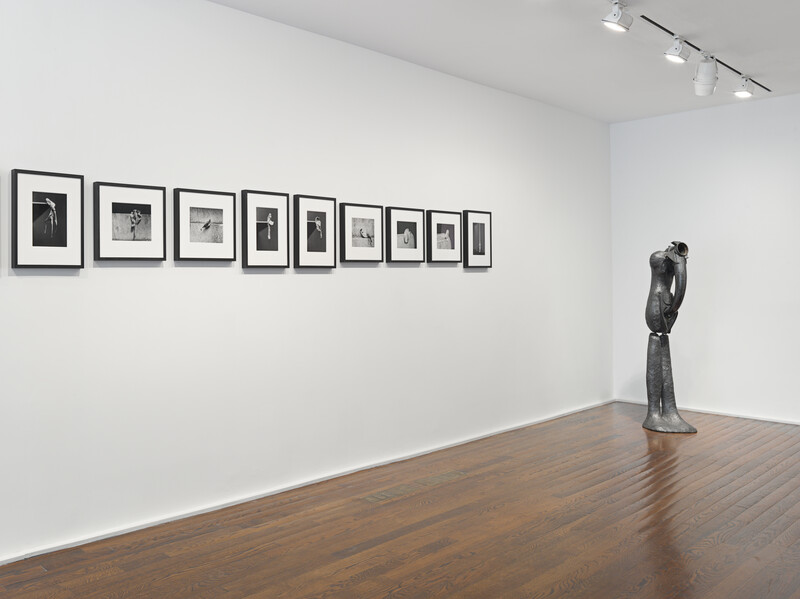
Installation view, ‘To Exalt the Ephemeral: Alina Szapocznikow, 1962 – 1972’, Hauser & Wirth New York, 69th Street, 2019

Alina Szapocznikow, Fotorzeźby (Photosculptures) [detail], 1971/2007. Photo: Thomas Barratt
1965–1971: Abstract Figuration In 1964 Szapocznikow began a new phase in her work by combining casts of the body with metal car parts. The use of the automobile as a stand-in for the human form connects Szapocznikow to early twentieth-century artistic movements such as Futurism and Dada, and to Marcel Duchamp’s use of the readymade. In ‘Man with Instrument’ (1965), a car part is positioned as an extension of the figure.
The machinery’s seamless replacement of a body part once again finds the artist exploring issues of corporeal commodification and questioning the perplexing and menacing ways in which technology exerts power over the body. In ‘Photosculptures’ (1971), Szapocznikow, with the help of Roman Cieślewicz, captures twenty pieces of chewing-gum in anatomical postures. The artist explained: ‘In shaping with my mouth odd-looking and bizarre forms, I suddenly realized what an extraordinary collection of abstract sculptures was moving between my teeth.
One has only to photograph and enlarge my masticated creations in order to achieve a sculptural presence.’ Szapocznikow identified in her dental impressions a highly original method for self-casting. Formally, these unusual little representations recall the abstract figurative sculptures characteristic of the artist’s work during the second half of the 1950s.

Alina Szapocznikow, Pamiątki (Souvenirs), 1967. Photo: Thomas Barratt

Installation view, ‘To Exalt the Ephemeral: Alina Szapocznikow, 1962 – 1972’, Hauser & Wirth New York, 69th Street, 2019
1967: Souvenir Series Although ‘Photosculptures’ is one of only two works of straightforward photography that Szapocznikow would make in her career, the artist began in 1967 to regularly embed photographic images into semi-translucent layers of polyester resin. In the series titled ‘Souvenirs’, a layer of skin-like resin coats images of celebrity figures (among them the mod icon Twiggy), portraits of friends (e.g., artist Christian Boltanski), and self-portraits. Like the imprint of the body culled from a plaster cast, the photograph here retains an explicit relationship to its subject.
In this new series, photography took over the indexical role of the cast; both techniques possess the unique ability to represent presence and loss simultaneously. 1970–1971: Return to Souvenir Series In the early 1970s, Szapocznikow returned to the ‘Souvenir’ series, integrating childhood snapshots and images of Holocaust victims into her constellation of source materials. ‘Souvenir I’ (1971) includes an image of Alina as a young girl, smiling and sitting atop her father’s shoulders during a visit to the seaside. Around her self-portrait swirls the face of a concentration camp victim, an image that Szapocznikow would use in other works.
This object integrates multiple temporalities: the time before, during, and after the war, with the last of these represented by the moment of the work’s creation. Both personal and collective histories are memorialized in this sculpture.

Installation view, ‘To Exalt the Ephemeral: Alina Szapocznikow, 1962 – 1972’, Hauser & Wirth New York, 69th Street, 2019
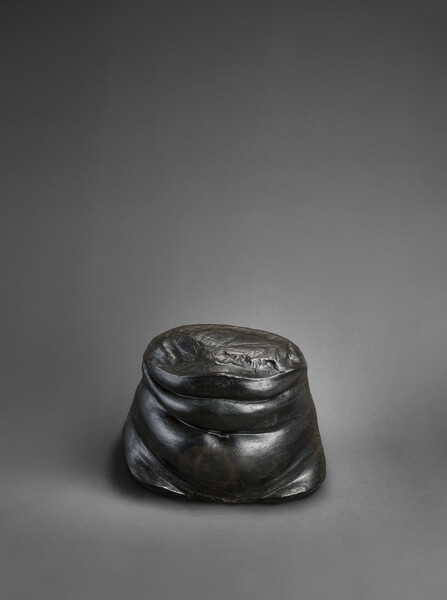
Alina Szapocznikow, Ventre (Belly), 1968. Photo: Thomas Barratt
The flesh-like surface of the resin casing connects Szapocznikow to a matrix of female artists working around the same time and mostly in New York, such as Eva Hesse, Louise Bourgeois, Lynda Benglis, and Hannah Wilke—women connected by an engagement with unexpected industrial materials, subject to visible age, to evoke the human body and its relationship to time in sculptural form. 1968: The Expansion Series (Untitled) and Belly-Cushion In 1968, Szpaocznikow introduced poured polyurethane foam into her work with the ‘Expansion’ series.
A product of the construction industry, this liquid plastic could be poured into molds or allowed to expand freely, granting an expressive range particularly well suited to Szaponikow’s needs at a critical moment in her career. In polyurethane, Szapocznikow found a soft, malleable medium in which to embed various objects and contrasting materials. Represented here by ‘Untitled’ (1968), the ‘Expansion’ series is characterized by the carcinogenic blackness of poured polyurethane, which engulfs the sculpture in an atmosphere of sickness and decay.
‘Belly-cushion’ (1968) was the first cast work that Szapocznikow made out of polyurethane foam. Like her ‘Lampe-Bouche’, the Belly-cushions were conceived as utilitarian objects: Szapocznikow imagined making these objects in large quantities for use as actual cushions in domestic settings.

Alina Szapocznikow, Sculpture (Fetysz IV) (Sculpture (Fetish IV)), 1971. Photo: Thomas Barratt

Alina Szapocznikow, Cendrier de Célibataire I (The Bachelor's Ashtray I), 1972. Photo: Thomas Barratt
1970–1971: Fetish Series The ‘Fetish’ series, made between 1970 and 1971, combines casts of body parts with classically feminine articles of clothing such as underwear, nylon stockings, and lace. The corporeal relationship between the sculptural cast and its bodily substrate is reflected in the physical connection one has with articles of clothing. Like a photograph or cast, clothes are left with an imprint of the body, a trace of the wearer.
1972: The Bachelor’s Ashtray ‘The Bachelor’s Ashtray I’ was made in 1972 as part of a series of works for Szapocznikow’s soon-to-be widowed husband. A cast of the lower half of Alina’s face and neck is doubled to create a vessel for cigarette butts. The last work in this series, a photographic diptych titled ‘The Bachelor’s Ashtray IV’, depicts cigarette butts decimating an otherwise fresh stick of butter on a white plate—a wholesome domestic scene ravaged by the toxic intrusion of carcinogenic agents. Pleasure is conflated with pain, sustenance with starvation; these uncanny juxtapositions evoke the perishable body in the artist’s final year.
1969–1972: Tumeurs, Autoportraits, Herbier In 1969, after having been diagnosed with breast cancer, Szapocznikow began making ‘Tumeurs’. These small, lumpen forms are molded from resin and contain mixtures of crumpled photographs, newspaper, and gauze. Significations of sickness and mortality became characteristic of Szapocznikow’s work beginning 1968. The ‘Herbier’ (1972) are sculptures and reliefs made from flattened casts of the bodies of Szapocznikow and her son Piotr. One of the artist’s last bodies of work, the ‘Herbier' capture distinct facial features and physical characteristics frozen in time.

Installation view, ‘To Exalt the Ephemeral: Alina Szapocznikow, 1962 – 1972’, Hauser & Wirth New York, 69th Street, 2019
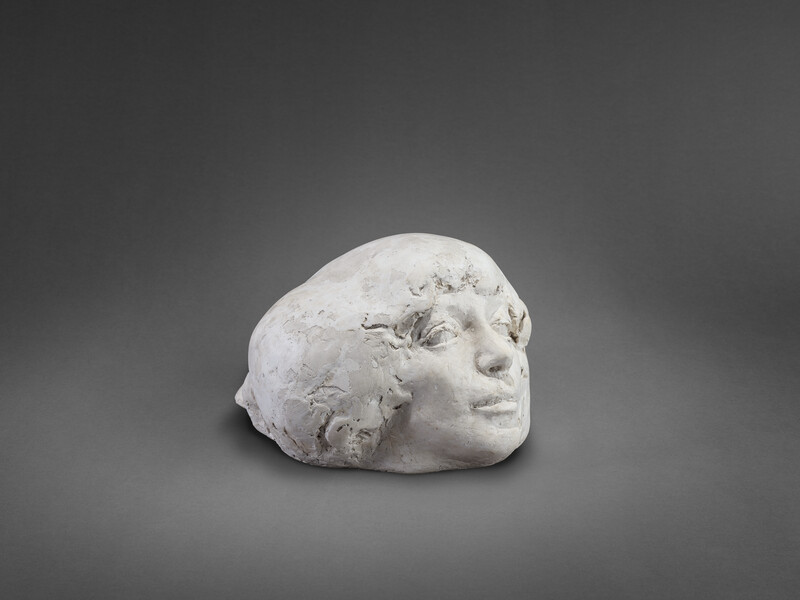
Alina Szapocznikow, Autoportrait (Self-portrait), 1971. Photo: Fabrice Gousset
Szapocznikow’s formerly sensual bodily forms have lost their volume; polyester resin has been pressed like a preserved flower between the pages of a book, giving the impression of frail, flayed skin. While skin is a layer of protection dividing interior from exterior and self from surroundings, Szapocznikow's thinned, detached integuments evoke the disintegration of barriers; the body’s layer of armor cannot protect it from the inevitability of death.
The Autoportraits, made in 1971 in both plaster and resin, evoke death masks; and indeed, Szapocznikow would die from cancer in the early months of 1973. These final works recall a significant moment in 1954 when Szapocznikow created her first cast of a human body: a death mask of her friend and artist Tadeusz Trepkowski. As Alina described her work at the end: ‘‘Despite everything, I persist in trying to fix in resin the traces of our body: I am convinced that of all the manifestations of the ephemeral, the human body is the most vulnerable, the only source of all joy, all suffering, and all truth.’
– The gallery’s first solo exhibition devoted to Szapocznikow, ‘To Exalt the Ephemeral: Alina Szapocznikow, 1962-1972’, is on view at Hauser & Wirth New York, 69th Street, 29 October – 21 December 2019.
Related News
1 / 5

